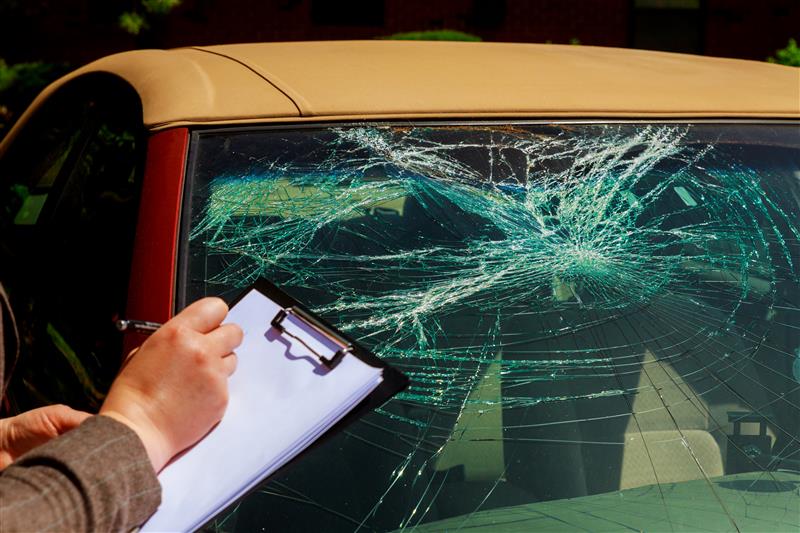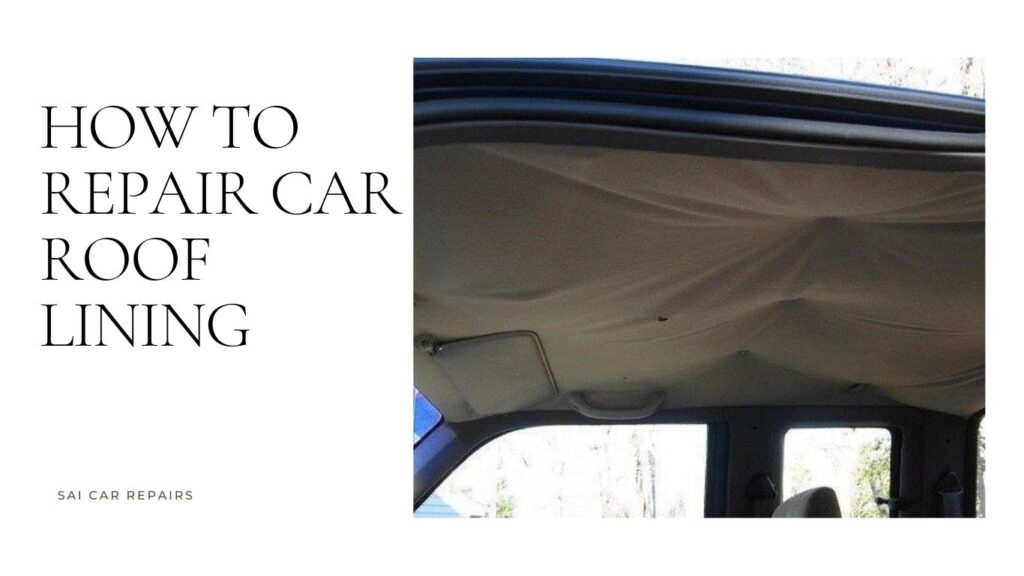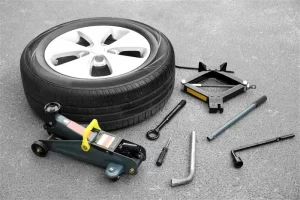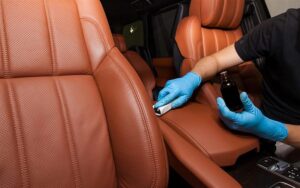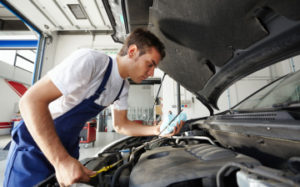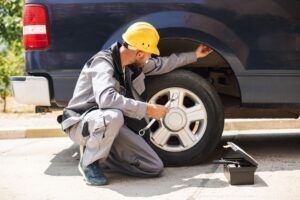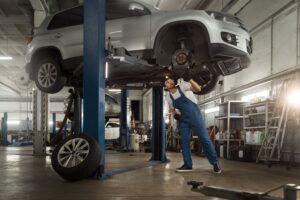Over time, a car’s roof lining can start to sag, making the interior look worn out and neglected. This common issue, also known as a headliner problem, happens when the adhesive holding the fabric in place weakens due to heat, humidity, or age.
A drooping roof lining is not just an eyesore—it can also become a distraction while driving. Fixing this issue promptly will not only restore your vehicle’s interior aesthetics but also ensure a more comfortable and safe driving experience.
Why Does a Car Roof Lining Sag?
A sagging car roof lining happens mostly because the glue holding it up wears out over time. Heat and humidity are the biggest reasons for this. If you live in a hot area, the constant warmth inside your car can soften the adhesive, making the fabric come loose. Moisture can also get into the headliner, weakening the glue even more. Plus, as cars get older, the materials naturally wear down, making sagging more likely.
Understanding the Causes
The primary cause of a sagging roof lining is the breakdown of the adhesive that bonds the fabric to the roof’s backing board. Several factors contribute to this deterioration:
Heat Exposure: Prolonged exposure to high temperatures can weaken the adhesive, causing it to lose its grip. This is especially common in regions with hot climates, where the interior of a parked car can reach extreme temperatures.
Humidity and Moisture: Moisture can infiltrate the headliner, compromising the adhesive’s integrity. This is particularly problematic in areas with high humidity or for vehicles that have experienced water leaks.
Age and Wear: As vehicles age, the materials used in the interior, including the headliner, naturally degrade. The adhesive becomes brittle over time, leading to sagging.
DIY Methods to Repair Car Roof Lining
DIY Methods to Repair Car Roof Lining
For those inclined towards a hands-on approach, several DIY methods can temporarily address:
Using Adhesive Sprays: Specialized headliner adhesive sprays are designed to reattach the fabric to the backing board. To apply:
1.Preparation: Carefully detach the sagging portion of the fabric without causing further damage.
2.Application: Spray the adhesive evenly on both the fabric and the backing board.
Reattachment: Press the fabric back onto the board, smoothing out any wrinkles or bubbles.
3.Steam and Paint Roller Technique: This approach utilizes steam to reactivate the existing adhesive.
4.Steaming: Use a handheld steamer to apply steam to the sagging area, softening the adhesive.
5.Smoothing: Immediately after steaming, use a paint roller to press the fabric back onto the backing board, ensuring a smooth finish without wrinkles.
6.Utilizing Pins or Thumbtacks: As a quick and temporary fix
Placement: Insert pins or thumbtacks into the sagging areas to hold the fabric in place.
Arrangement: For a more aesthetic appearance, arrange the pins in a symmetrical pattern.
Professional Repair Options
While DIY methods offer temporary relief, seeking professional assistance ensures a durable and aesthetically pleasing result. Professionals can provide services such as:
Complete Headliner Replacement: This involves removing the old fabric and adhesive, preparing the surface, and installing a new headliner with high-quality materials.
Partial Repairs: For localized issues, professionals can repair specific sections of the headliner, matching the fabric and ensuring a seamless appearance.
Structural Repairs: If the backing board is damaged, it may require repair or replacement to provide a solid foundation for the headliner.
Professional car repairs not only restore the appearance of the vehicle’s interior but also ensure the longevity of the fix, reducing the likelihood of recurrent issues.
To extend the lifespan of your car's roof lining:
Park in Shaded Areas: Whenever possible, park your vehicle in shaded areas or use sunshades to minimize heat buildup inside the car, protecting the adhesive from heat-related deterioration.
Control Moisture Levels: Ensure that windows and sunroofs are properly sealed to prevent water ingress. Using dehumidifiers or air conditioning can help control interior humidity levels.
Regular Interior Maintenance: Keep the interior clean and dry. Address any spills or leaks promptly to prevent moisture from reaching the headliner.
Use Protective Sprays: Some products are designed to protect interior fabrics from UV rays and moisture. Regular application can provide an additional layer of defense.
Conclusion
Repairing a loose car roof lining is essential not only for maintaining your car’s appearance but also for ensuring a safe and comfortable drive. While DIY methods can offer temporary solutions, they may not provide the durability and finish that professional services ensure. For vehicle owners in Adelaide seeking reliable and high-quality Auto repair services, SAI Mechanical Repairs stands out as a premier choice.
With a team of experienced and certified mechanics, We offer comprehensive automotive services, including expert headliner repairs. Their commitment to quality workmanship and customer satisfaction ensures that your vehicle receives the best care possible. Whether you’re dealing with a sagging headliner or other mechanical issues, provide efficient and effective solutions tailored to your needs.
Don’t let a sagging roof lining compromise your driving experience. Contact us today to restore your vehicle’s interior to its pristine condition.
